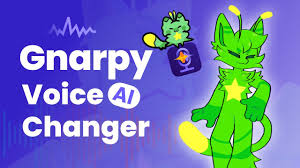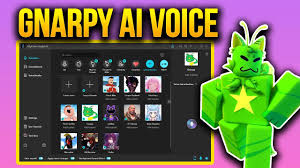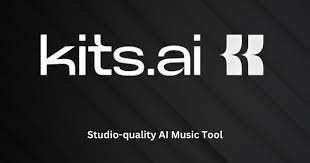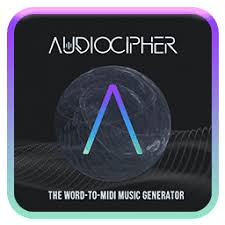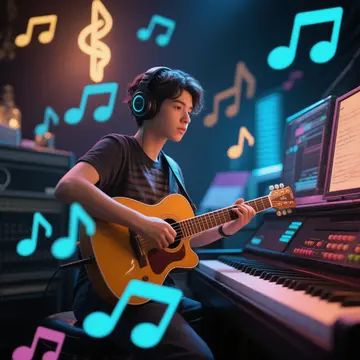Introduction: Why Kits AI Voices Are in High Demand
In 2025, Kits AI voices have become a go-to resource for musicians, producers, and creators looking to generate professional-grade vocals using artificial intelligence. Whether you're trying to clone your own voice, explore celebrity-inspired voice models, or build AI-generated harmonies for your next track, Kits.AI offers one of the most extensive and user-friendly libraries in the AI music production space.
But if you’re new to the platform—or just overwhelmed by the number of options—you might be wondering: How do you actually find Kits AI voices that match your creative needs?
This guide breaks it all down for you: where to find Kits AI voices, how to test them, tips for choosing the right one for your genre, and how to use them legally and effectively in your workflow.
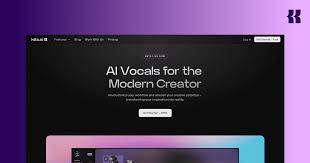
What Are Kits AI Voices?
Kits AI voices are high-fidelity AI voice models trained on real human vocal datasets. They’re designed to let users create sung or spoken vocal tracks in different styles, genders, tones, and languages—all without a physical vocalist.
These voice models can be:
Licensed official voices (from real artists or voice actors)
User-trained custom models (you can upload your own voice dataset)
Public community models (created and shared by other Kits users)
The Kits.AI voice library includes everything from pop and R&B to hip-hop and EDM vocal styles—making it one of the most versatile tools in the AI audio landscape.
Step 1: Sign Up for a Kits.AI Account
To access any Kits AI voices, you’ll need to create a free account at kits.ai. The sign-up process only takes a minute and includes:
Email address or Google login
Username creation
Choosing a usage type (music producer, creator, hobbyist, etc.)
Once you’re logged in, you get access to the voice library, which is the heart of the platform.
Step 2: Explore the Kits AI Voice Library
To find the right Kits AI voices, head over to the “Voice Library” tab on the dashboard. The voice discovery interface includes filters that let you search by:
Genre (e.g., pop, trap, rock, EDM)
Voice gender (male, female, genderless)
Language (English, Spanish, Japanese, Korean, etc.)
Style tags (gritty, soft, robotic, airy, warm, bright)
You can preview each voice model with demo audio before using it in your track. The previews are typically short audio clips that showcase the voice in a musical context—very helpful for gauging vocal texture and tone.
Step 3: Use Voice Tags and Filters for Precision
Kits.AI includes smart tagging that makes voice discovery faster and more relevant. For example, if you're producing a lo-fi hip-hop track, you can filter by:
Genre: “Hip-Hop”
Style: “Laid-back” or “Grainy”
Tempo suitability: “Slow” or “Mid-tempo”
This ensures you're not stuck testing vocal models that are better suited to hard rock or high-energy EDM.
Pro tip: Use multiple tags at once to narrow down your results. A good combination might be:
“Pop + Female + Soft + Bright” for modern radio-style vocals.
Step 4: Check Licensing and Commercial Use Options
Not all Kits AI voices are free for commercial use. Some fall under different licensing categories:
Official Licensed Models: These voices are cleared for commercial use, but may require a usage fee or crediting.
Community-Trained Voices: These are often shared freely, but come with varying usage rights—check the fine print.
Custom Voice Models: If you train your own, you own the rights (as long as you use your own vocal data or have permission from the source).
Before you integrate any Kits AI voice into a commercial project, always verify:
Is it allowed for monetized YouTube videos?
Can I distribute songs using this voice on Spotify?
Do I need to credit the voice creator?
Kits.AI provides a licensing icon on each voice profile—hover over it for full details.
Step 5: Test the Voices in the AI Song Generator
Once you find a voice you like, Kits.AI lets you test it directly with its built-in AI song generation tool. You can:
Upload a dry vocal stem
Input MIDI or melodies
Generate full vocal lines using lyrics and melodies
Adjust pitch, timbre, and style on the fly
This is a great way to hear how a voice performs in the context of your actual track before committing to a full render or download.
Step 6: Favorite and Organize Voices
If you’re trying multiple voices across genres or projects, use the “Favorite” function to save them into folders. Kits.AI allows users to:
Create custom voice folders (e.g., “Lo-Fi Vocals,” “Trap Hooks”)
Tag voices with personal notes
Sort by “Recently Used,” “Most Natural,” or “Great for Harmonies”
Organization is key—especially as your voice model library grows.
Step 7: Train or Upload Your Own Voice Model (Optional)
If you want something hyper-personalized, Kits.AI also allows you to upload custom vocal datasets and train your own model. This is ideal if:
You want to clone your own voice
You’re building a character for a long-form project
You’re a vocalist who wants to automate vocal harmonies or backups
You’ll need around 10–30 minutes of clean, labeled vocal data, and the training process usually takes a few hours.
What Makes Kits AI Voices Unique?
High fidelity output: Better quality than most free voice clones on the market
User-friendly interface: Clean design for creators of all skill levels
Voice customization: Pitch, tempo, and texture tweaking available in real time
Active updates: New voice models added weekly, including trending genres
Kits.AI isn’t just about synthetic singing—it’s a full vocal production platform built around AI-first thinking.
Real Use Cases of Kits AI Voices
YouTube creators using AI vocals to dub video essays or skits in different tones
Indie artists replacing demo vocals with near-studio-quality AI takes
TikTok producers generating hyperpop and glitch vocals without recording gear
Podcasters and streamers creating voice clones for consistent branding
Common Mistakes to Avoid
Ignoring licensing: Always check the usage rights for each voice
Using too many voices at once: Keep vocal consistency across a project
Skipping the preview step: Demo before download to avoid wasting render credits
Using voice models without style matching: A deep rock vocal may sound out of place in ambient electronica
FAQ
Can I use Kits AI voices for commercial songs?
Yes, but it depends on the voice model’s license. Some require attribution or payment for commercial rights.
Do Kits AI voices work in real-time inside DAWs?
Currently, Kits.AI is web-based. You can render audio and import it into your DAW, but live plugin use is not available yet.
Is Kits.AI free to use?
There’s a free tier with limited renders. Premium plans start at $14/month, offering more voice options and higher-quality exports.
Can I clone my own voice?
Yes. Kits.AI offers voice training if you provide enough clean audio data. It’s one of the most accessible self-cloning tools available.
How many voices does Kits.AI offer?
As of mid-2025, over 200 voices are available, with new ones added weekly across multiple languages and styles.
Conclusion: Start Exploring Kits AI Voices Today
If you’ve been thinking about experimenting with AI vocals but didn’t know where to begin, Kits.AI is one of the best platforms to dive into. It’s intuitive, powerful, and full of creative possibilities.
From discovering new vocal textures to training your own AI voice, the platform makes it easy to bring your musical ideas to life—whether you're producing lo-fi beats, cinematic scores, or just voiceovers for a YouTube video.
The world of Kits AI voices is constantly growing—and the sooner you learn how to navigate it, the more creative doors you’ll open.
Learn more about AI MUSIC

